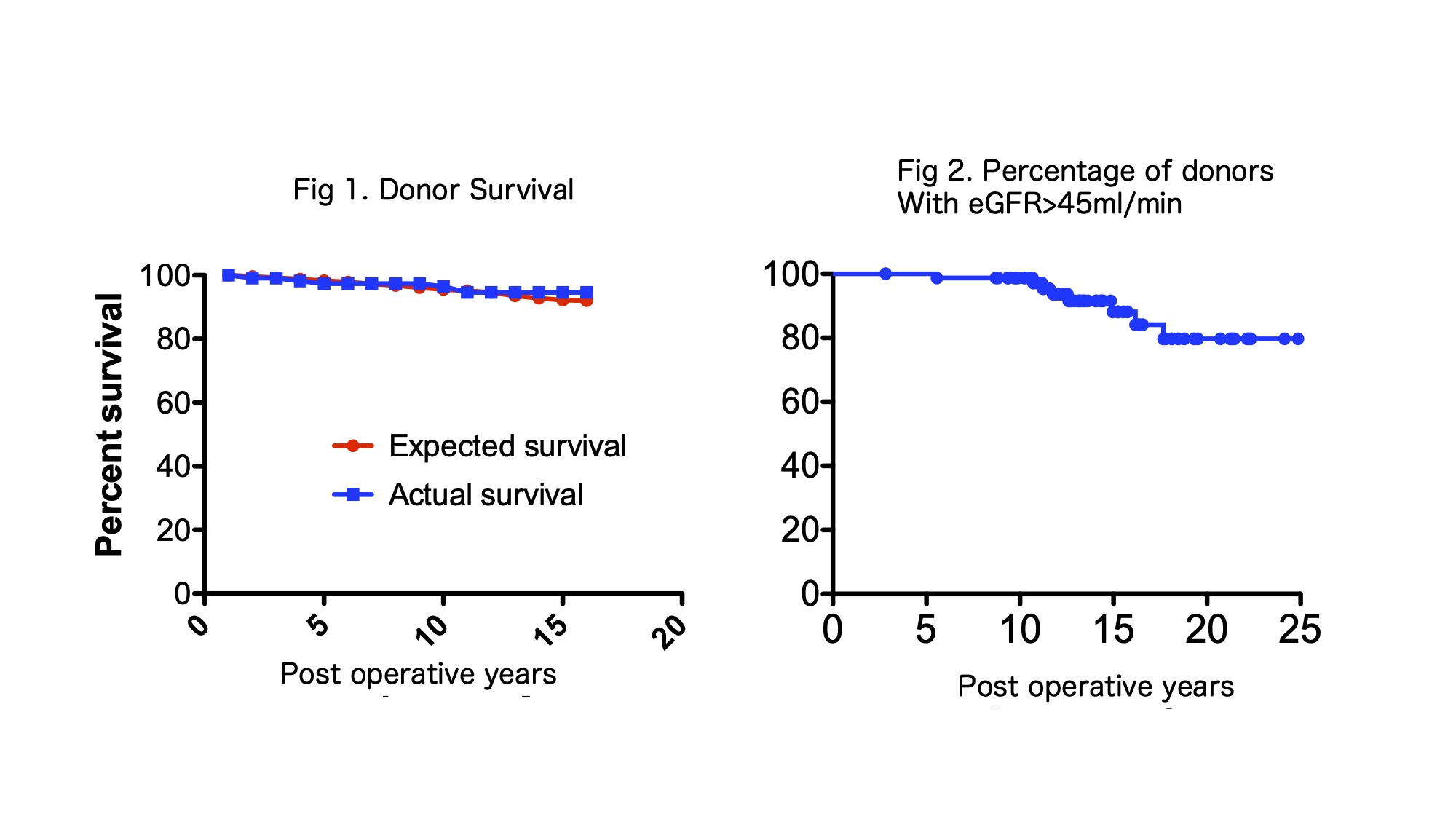Long-Term Outcomes for Living Kidney Donors: A Japanese Single-Center Experience
Urology, Hokkaido University Hospital, Sapporo, Japan
Meeting: 2020 American Transplant Congress
Abstract number: D-040
Keywords: Kidney transplantation, Living donor, Outcome, Survival
Session Information
Session Name: Poster Session D: Kidney Living Donor: Long Term Outcomes
Session Type: Poster Session
Date: Saturday, May 30, 2020
Session Time: 3:15pm-4:00pm
 Presentation Time: 3:30pm-4:00pm
Presentation Time: 3:30pm-4:00pm
Location: Virtual
*Purpose: Previous studies suggested that live kidney donors do not have a higher risk of death or end-stage kidney disease (ESKD) than the general population. However, recent studies have suggested that screened kidney donors have a higher risk of ESKD than matched healthy controls. Therefore, donor risk is controversial. Furthermore, only a few studies have evaluated long-term renal function after kidney donation. We aimed to evaluate the long-term outcomes including mortality and renal function in Japanese kidney donors.
*Methods: We collected the data of 170 living kidney donors (65men, 115 women) who underwent nephrectomy from 1965 to 2012 in our hospital. Median age was 53 years (range, 26-75 years). We evaluated mortality, cause of death, ESKD incidence, and change in renal function. Donor survival rate was compared with the age- and gender-matched expected survival calculated using the mortality data of Japan provided by the National Cancer Center.
*Results: Median follow-up period was 12.6 (2-41) years. Survival analysis showed that 157 donors were still alive and 13 (7.6%) were dead. The median interval between donation and death was 9.4 (2.0-32.8) years; median age at death was 70 (41-87) years. The following causes of death were observed: malignancies, 8; cardiovascular disease, 1; pneumonia, 1; suicide, 1; gastrointestinal bleeding, 1; and sudden death 1. Actual donor survival rates at 5, 10, 20, and 30 years were 98.3%, 94.6%, 93.0%, and 82.5% respectively; these values were comparable to age- and gender-matched expected survival (Fig. 1). Only 1 (0.5%) donor developed ESKD 24 years after donation due to contrast-induced nephropathy after undergoing coronary angiography. Next, we evaluated the renal function in 130 donors. During follow-up, donors showed the following estimated glomerular filtration rates (eGFR): 127 (97.6%), eGFR > 30ml/min; 114 (87.7%), eGFR > 45 ml/min; and 41 (32%), eGFR > 60 ml/min. The percentage of donors with eGFR > 45 ml/min at 5, 10, 20, and 30 years were 98.4%, 95.9%, 80.0%, and 80.0% respectively (Fig. 2).
*Conclusions: Our data suggested that kidney donors did not have an increased long-term risk of death compared with the general population. However, some donors showed decreased kidney function 10 years after donation. Therefore, long-term follow up of kidney donors is crucial.
To cite this abstract in AMA style:
Hotta K, Iwami D, Iwahara N, Shinohara N. Long-Term Outcomes for Living Kidney Donors: A Japanese Single-Center Experience [abstract]. Am J Transplant. 2020; 20 (suppl 3). https://atcmeetingabstracts.com/abstract/long-term-outcomes-for-living-kidney-donors-a-japanese-single-center-experience/. Accessed December 26, 2025.« Back to 2020 American Transplant Congress

